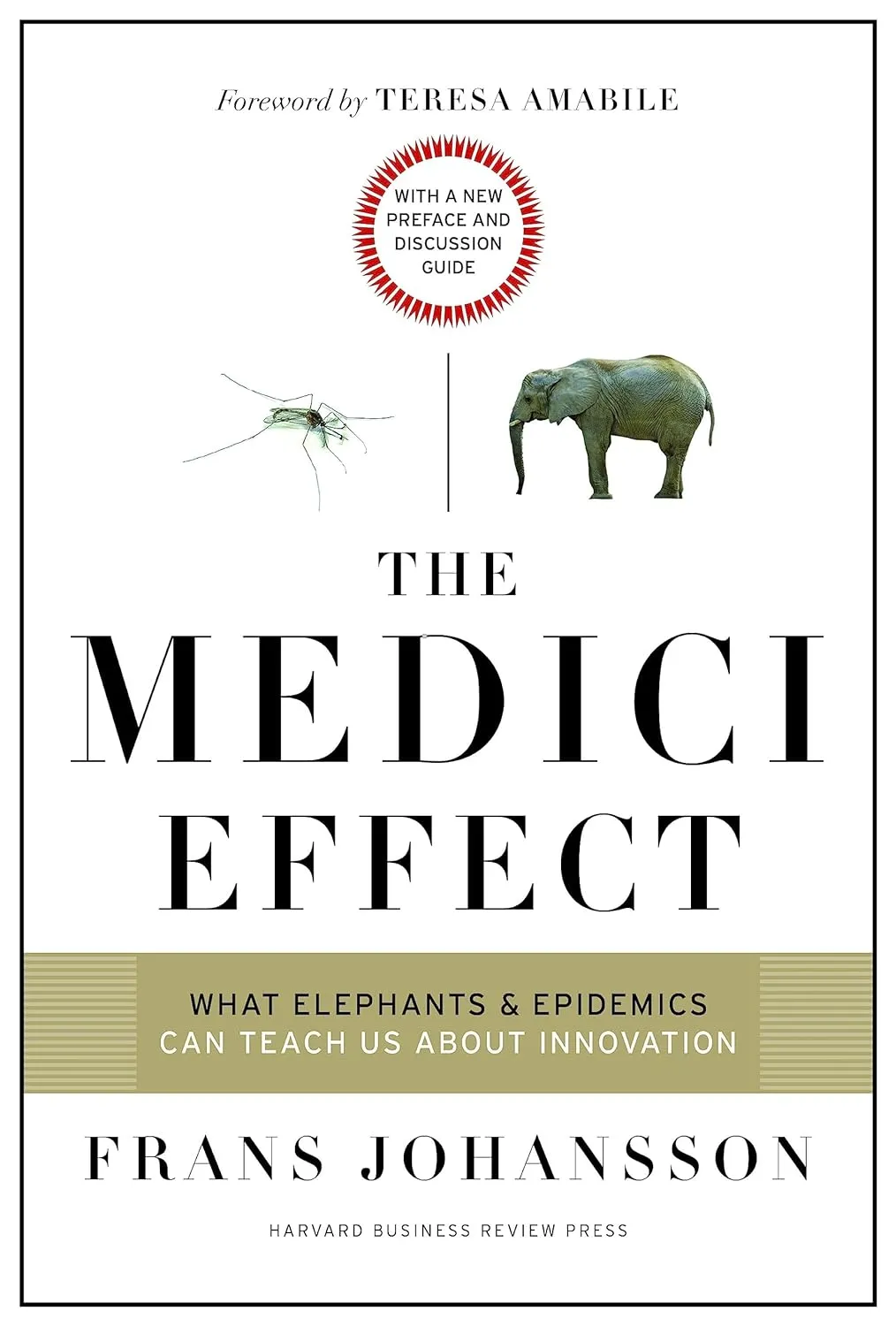Discusses how breakthrough ideas most often occur when we bring concepts from one field into a new, unfamiliar territory. Uses examples from various disciplines to illustrate how innovation happens at the intersection. Encourages breaking down traditional barriers and combining different fields of expertise. Challenges the reader to think differently and be more open to diverse ideas. Inspired by the Medici family of the Renaissance, who funded creators from a wide range of disciplines.

"The Medici Effect: How Innovation Comes to Life" by Frans Johansson addresses a fascinating topic: how and where innovations actually emerges. For the author, it is at the intersections of different fields — similar to the Renaissance Medici family, which created an explosion of innovation by bringing together artists and scientists from various disciplines. Moreover, Johansson illustrates through numerous real-world examples how this intersection effect can be utilized. It is about the innovation that arises when diverse views, ideas, and knowledge areas come together — and why this is especially important in our increasingly connected world.
The author demonstrates through scientific studies that the number of a person's ideas directly correlates with the quality of their best ideas. The more brainstorms and approaches a person produces, the higher the chance that high-quality ideas and innovations are among them.
As a striking example, Johansson mentions Albert Einstein, who generated a large number of novel concepts and publications, some of which are the groundbreaking discoveries for which he is still known today. The author also vividly shows how the quantity of ideas can be increased: by combining insights from different fields. At these intersections, the number of possible ideas increases exponentially, as each thought from one field can be combined with every other thought from another area.
Here, the author advocates for more randomness in our decision-making process. He refers to the willingness to explore randomly assembled concepts, initially believed to be incompatible. At the same time, he emphasizes the importance of keeping an open mind in the world: We often have many ideas and think of many possibilities, but we discard most of them almost immediately. It is often worthwhile to write down even crazy ideas—perhaps a genuinely useful thought will develop from them later.
According to the author, ideas can primarily be defined as new thoughts combined in previously unknown ways. However, not all ideas are equally valuable. It is mainly those that are far from previously known solutions that are innovative. The chance of this is very slim when thoughts from the same field are connected, but it increases significantly when previously unknown areas are brought together.
At the same time, Johansson also emphasizes that it is not sensible to try slight variations of previous combinations if this connection has proven to be unhelpful. He underscores this by saying it is pointless to write 15 books on a topic that no one is interested in. In this case an author should switch to a new topic after the first book and not try to achieve success with minimal changes.
The biggest pitfall for linking ideas from different areas are "associative barriers". These cognitive structures can trap us in certain patterns of thought and inhibit our creativity.
We often connect things in the same known and learned pattern in chains of association. This is often useful because it saves us a lot of thinking in everyday life. For example, if I am looking for a cooking pot, I want to immediately think of the kitchen drawer and not consider dozens of random options. However, it should also be considered that different people and cultures have different chains of association: The book provides the example that in the USA, grasshoppers are seen as a pest, in China they are associated with pets, and in Thailand, many people consider them an appetizer.
Innovation, however, is about finding new connections. To break through associative barriers, Johansson explores various methods such as reversing assumptions or setting random limitations. Both force one to leave familiar patterns and find fresh approaches. An example from the author is a famous chef from New York, who has very low associative barriers—this helped him to combine traditional Swedish dishes with food from around the world, thus co-founding the "food fusion" trend.
A particularly important point of the book concerns the strength and advantages of diverse teams. When these bring in many different perspectives, experiences, and skills, the number of possible ideas from different areas that can be combined increases significantly, providing a strong boost for creativity and innovation. The author therefore warns against assembling teams based solely on personal compatibility, as we often get along best with those who are similar to us in many aspects.
Moreover, Johansson also provides another exciting insight, one I had not considered before: Diverse teams have not only advantages in idea generation but also in implementation. Due to their diversity, they know more different people in the company, which helps to find easier ways around bureaucratic hurdles and gain supporters for the idea.
Johansson's analysis goes beyond the mere process of idea generation. He talks about the importance of failures in innovation processes. New ideas are naturally associated with high risk which leads to frequent failures. Yet, it is often in this failure that the greatest learning effect lies. It is often more sensible to fail quickly and often to find out the few ideas that are truly successful. The author therefore emphasizes the importance of a culture of failure: Companies and teams should not only allow but even encourage trying out and testing new ideas—even if they often fail. Only then can truly novel concepts and products emerge.
"The Medici Effect" provides a deep insight into the complex structure of innovation. It is not only a read about idea generation but also a guide to approaches for their implementation. What is particularly impressive is Johansson's ability to interweave real stories and scientific findings into a coherent overall picture. The book is thought-provoking, inspiring, and encourages expanding one's creative horizon.
